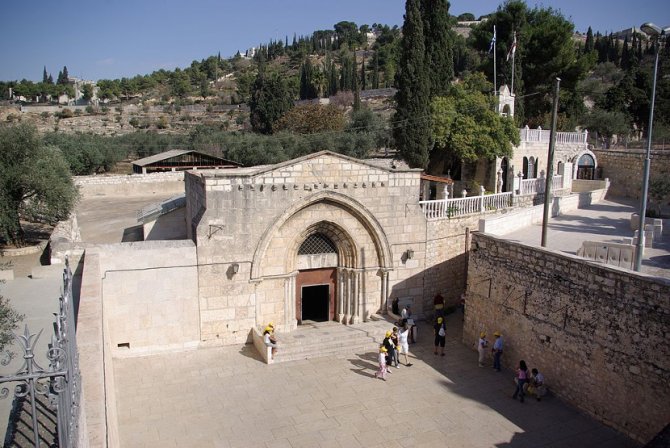The Virgin Mary’s tomb is in Gethsemane, in the Kedron Valley, at the foot of the western slope of the Mount of Olives in Jerusalem. It is one of the two most important Christian shrines in the Holy City; the other, of course, is the Church of the Holy Sepulcher, or the Temple of the Resurrection of Christ. Above her grave is the Church of the Assumption of the Blessed Virgin Mary, which houses the chapels dedicated to the Holy Righteous Joachim and Anna (Mary’s parents) and Righteous Joseph (Mary’s husband).
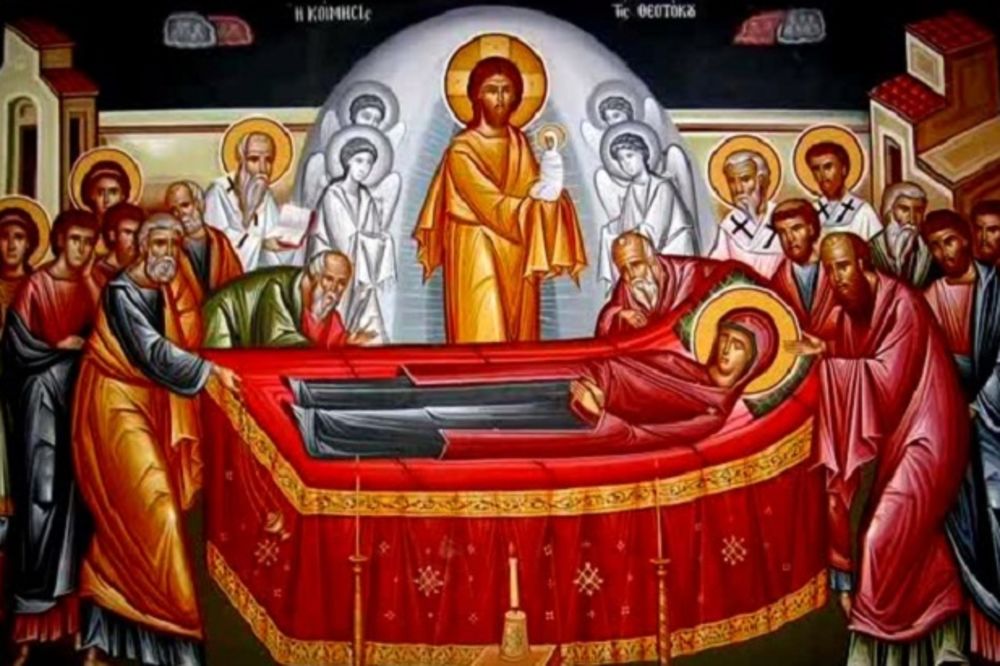
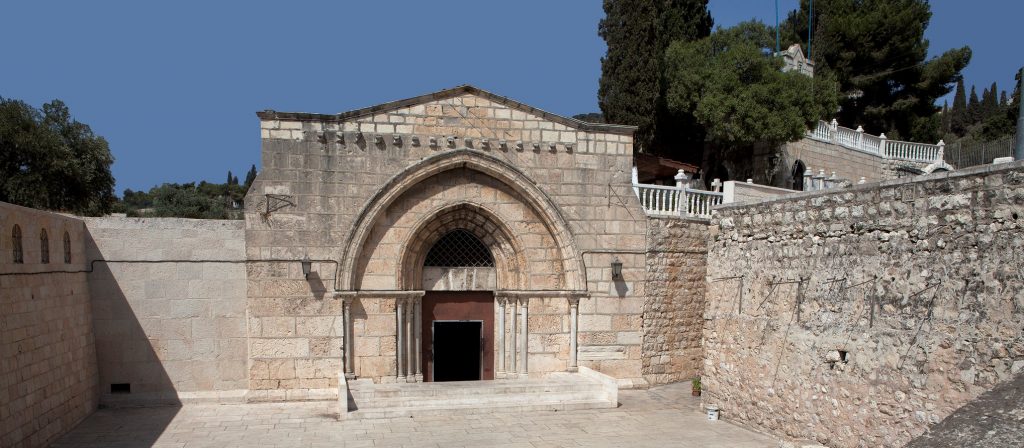
The sacred tradition of the Orthodox Church teaches that the Mother of God died a natural death in Jerusalem like any other human being, and that then the Savior came down from Heaven to take her newborn soul. Also, that on the third day her body was resurrected and that at that moment she ascended to the Heavens (Ascension of the Blessed Virgin) with both soul and body, awaiting the “resurrection of the dead and the life of the age to come.” Her tomb was found empty on that occasion.
An historical text probably written in the 6th century by Cyril of Scythopolis tells of an interesting event dating from the middle of the previous century, namely from the year 451. This text states that during the Chalcedon Council (Fourth Ecumenical Council), the Eastern Emperor Flavia Marcian and his wife August Eli Pulhery (two of them Orthodox Church celebrates today as the Blessed Emperor Marcian and Empress Pulheria) asked the Patriarch of Jerusalem, Juvenal, to send them the relics of the Virgin.
Juvenal replied to them that on the third day after the funeral, Mary’s tomb was found empty and that only its shroud was preserved in the church at Gethsemane. Gethsemane is located below Olive Mountain and next to the walls of the Old City where Jesus prayed and met secretly with his followers. Also it was the Gethsemane where Judas came with soldiers and with a kiss on Christ’s left cheek showed soldiers whom to arrest.
The shroud of the Blessed Virgin Mary was sent to Constantinople the following year, where it was kept in the church of Our Lady of Vlahernska. According to another tradition, behind the Holy Mother of God remained the belt that is today kept in the monastery of Vatoped in Mount Athos; today, the belt is the only surviving treasure from her life, and tradition says she dropped it on the Assumption.
So, in the mid-5th century, the Christian story of the Assumption of the Blessed Virgin was obviously not a well-known story in the Christian world. It was definitely known in Jerusalem, but since the Emperor and Empress – who were the great believers and patrons of the aforementioned Ecumenical Council – were not aware of this belief. Therefore, it cannot be said that it was widespread. On the other hand, who knows, the Emperor and the Empress may have simply been uninformed.
The original church above the tomb was built by Patriarch Juvenal exactly during the reign of Emperor Markian. Some archaeological excavations have shown that the site was indeed a cemetery in the 1st century.
The Pagan Persians destroyed it in 614, and it was demolished and rebuilt many times over the following centuries, but the crypt has always remained intact since. It is also important for Muslims, as the place of death of the woman who gave birth to the second greatest Islamic prophet Isa (or Jesus).
The Crusaders built a new church in 1130, but it was demolished by Saladin in 1187. The crypt was not touched again. Then, in the fourteenth century, the Franciscans built this church which still exists today.
It came into Orthodox hands in 1757 when the Greek clergy on the Palm Sunday launched an operation to take over most of the holy sites in the Holy Land, on which occasion the Franciscans were expelled. It has since been administered by the Greek Orthodox Patriarchate of Jerusalem and the Armenian Patriarchate of Jerusalem.
Entrance to the Church
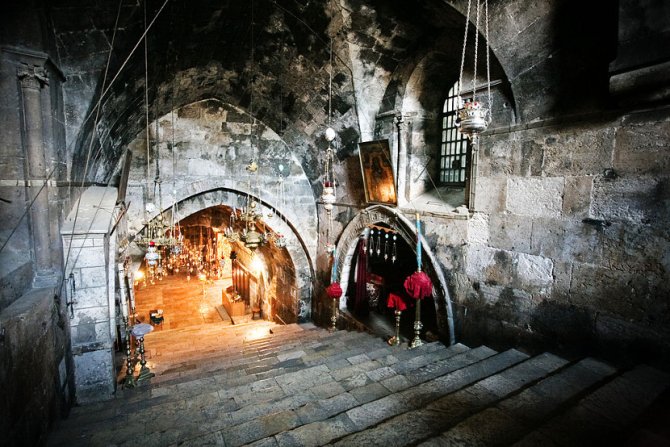
Entrance to the Holy Tomb of Virgin Mary
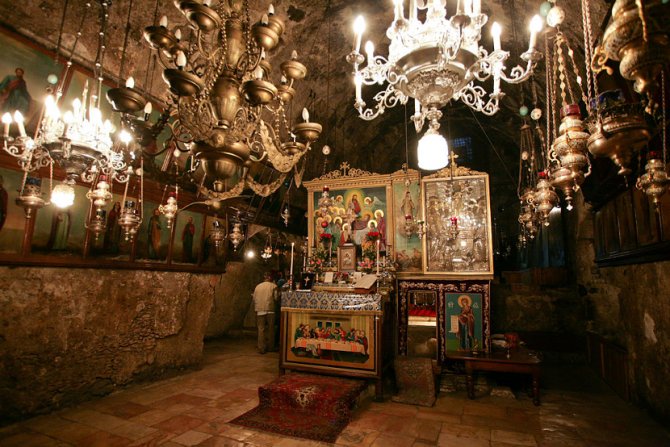
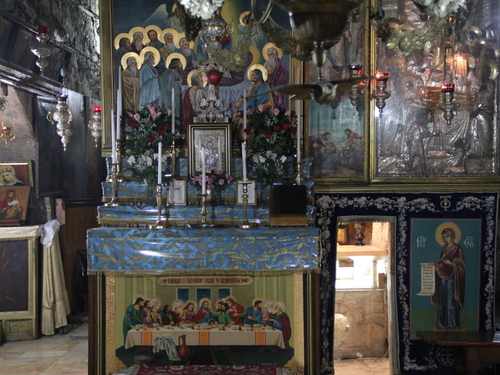
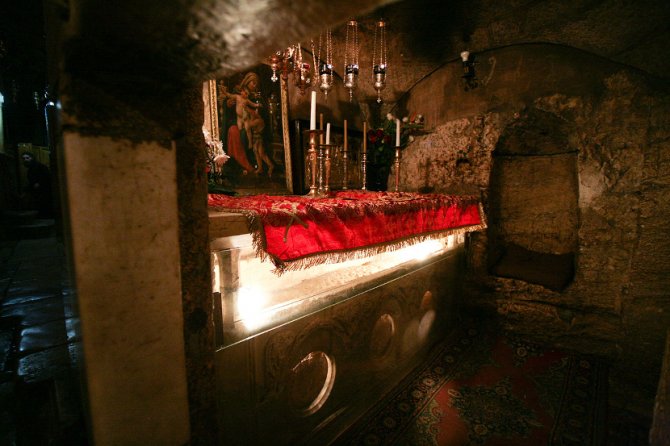
Virgin Mary's Tomb
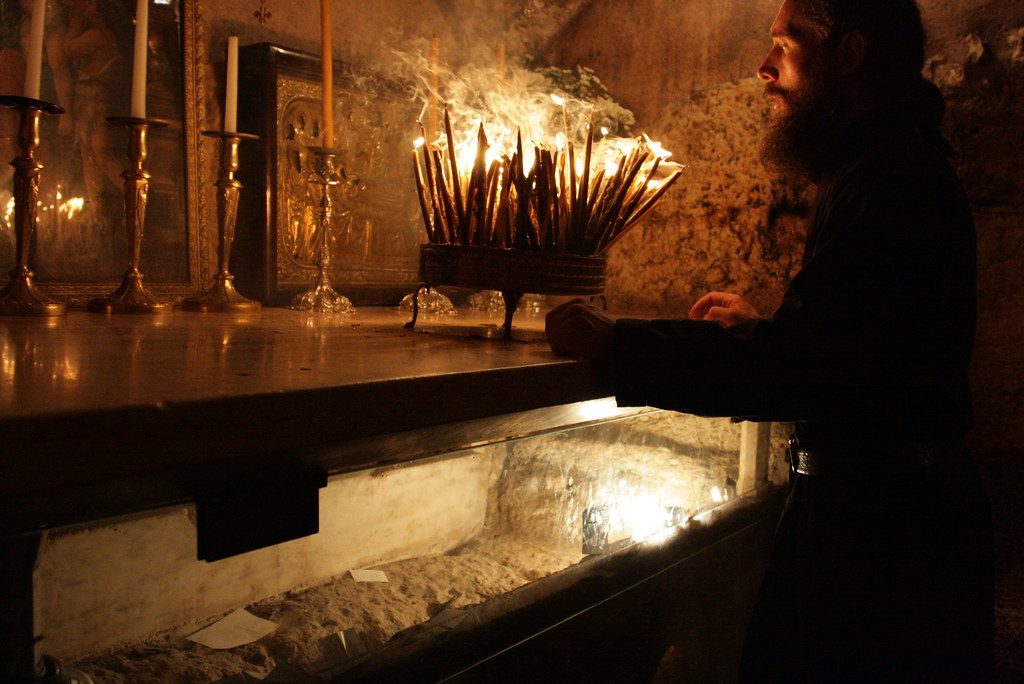
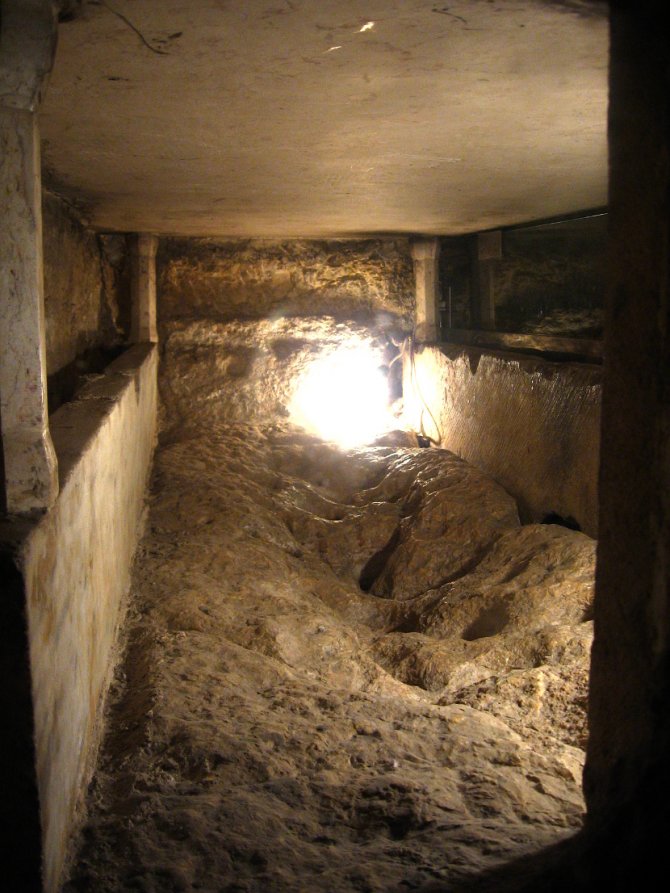
Most Holy Lady of Jerusalem
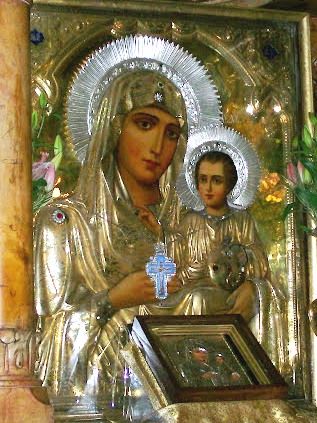
Most Holy Lady of Jerusalem) is a very popular icon o the Theotokos because it overlooks the empty tomb of the Most Holy Theotokos at the Sepulcher of the Mother of God in Gethsemane — blessing the numerous pilgrims visiting the Holy Landof Jerusalem.
According to Holy Tradition this miraculous icon was painted through the revelation of the Holy Theotokos to a nun named Tatiana from the Holy Monastery of St. Mary Magdalene, around 1870 AD.
In 1870, there lived a monastic iconographer nameded Tatiana. One night, a lady appeared to her in a vision saying, “Sister Tatiana, I have come so that you can paint me.” Tatiana replied, “Let it be, Blessed Sister; however, I am an iconographer and not a painter.” The lady replied, “… well then, you should paint me using your iconographic style.”Sister Tatiana was furious with the boldness of this lady’s response and said, “I do not have any plank of wood to use.” The lady then gave her the plank of wood the sister would need and told her to “paint.”In obedience to her guest, the sister started her iconography. Sister Tatiana glanced at her guest, and she noticed the guest’s appearance transfigure in front of her. The lady’s mantle started to turn into gold and her face was glowing intensely. This change in the appearance of the lady worried Tatiana but the lady spoke to her, saying: “O Blessed Tatiana, you are the only person, after the Apostles and the Evangelist Luke, to have this opportunity to write an icon of me again.” Sister Tatiana then realized that she was in the presence of our Holy Mother the Theotokos. In shock she awoke from her vision.She immediately went and informed her Mother Superior of the vision in detail. The abbess did not believe in the story but told her to go to sleep and the following day she could paint an icon of the Panagia with her blessing.Tatiana returned to her cell and before entering she noticed a bright light shining through the door. She hastened to the abbess, once again, to bring her to her cell to witness this light and understand that she was not lying about the visions. Together they returned to Tatiana’s cell. Inside, they could smell a beautiful and heavenly fragrance and the light was so bright that only then did they realize that the aroma and the light were coming from an icon of the Virgin Mary.The mysterious and miraculous appearance of the icon had the sisters in shock but our Holy Mother the Theotokos appeared once more to Tatiana and said, “Now take me from here down to my home in Gethsemane of Jerusalem.” This is what the abbess and the sister did.
In iconography, this is termed “acheiropoieto” (Gr. an image not painted by hands) and is now located exactly where the Panagia wanted it to be, in her “home,” her final resting place at her holy tomb in Gethsemane. The name “Ierosolymitissa” has since been adopted since it means the Most Holy Lady from Jerusalem and is extremely miraculous.
In January of 2000, the icon was flown from Gethsemane to the Metropolitan area of Kitiou to celebrate 2000 years since the birth of Christ. This formal procession occurred in the afternoon at the Metropolitan church of the Sotiros.
An additional note: St. Paisios of Mount Athos (1924-1994) commented that, having had the blessing to see the Theotokos in visions, the icon of Panagia “Ierosolymitissa” closely resembles her holy face, more than any other icon.

